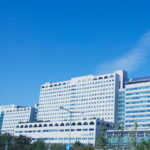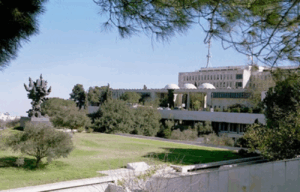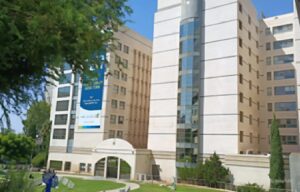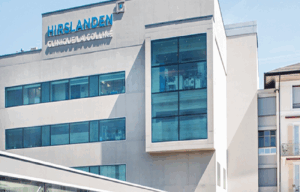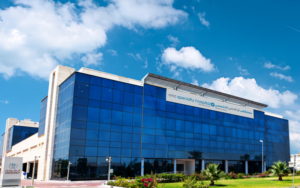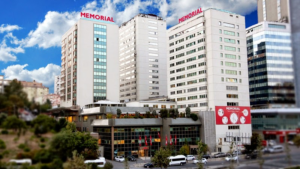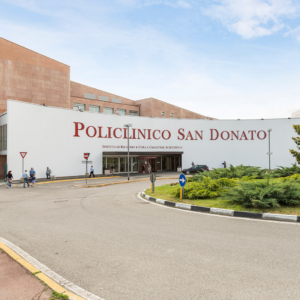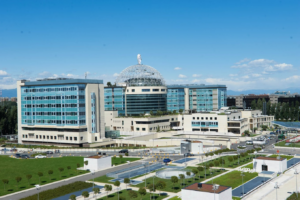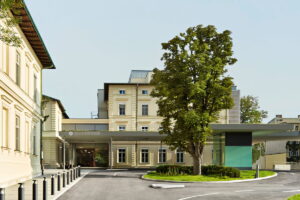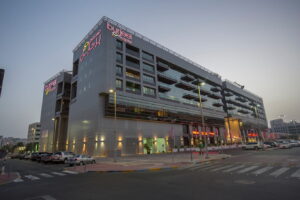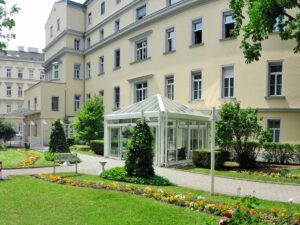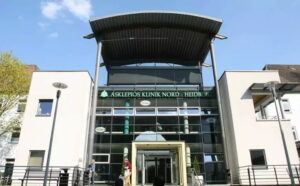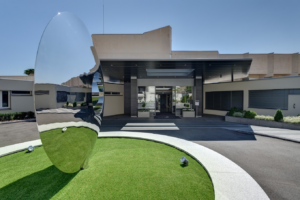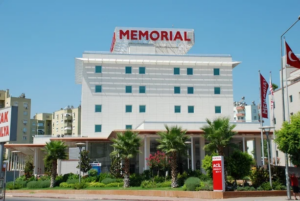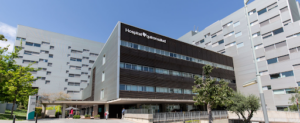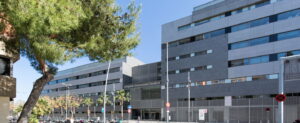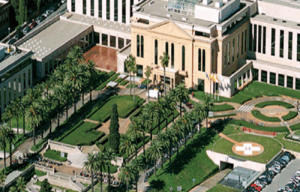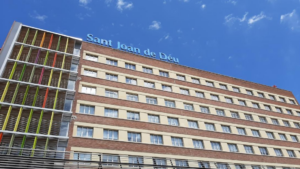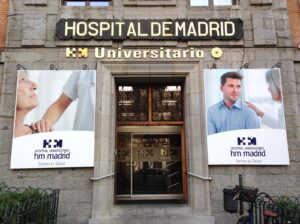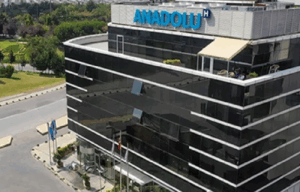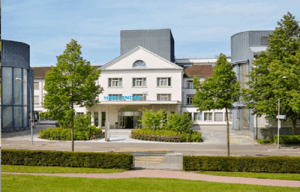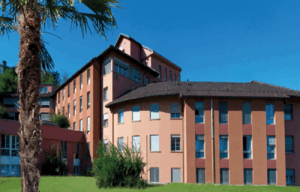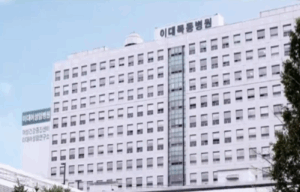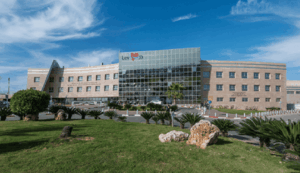Uterine fibroid
Disease Description
Uterine fibroid is one of the common problems in modern gynecology, ranking second after inflammatory diseases of the pelvic organs. A fibroid is a benign, well-demarcated tumor of the body or cervix of the uterus.
According to WHO data, myomatous nodules are diagnosed in 30-35% of women of reproductive age (more often after 30 years). However, in recent years, the incidence in women under the age of 30 has increased from 2% to 12.5%.
Symptoms indicating the need for diagnosis and treatment
Among all women diagnosed with fibroids, only one-third have symptomatic manifestations, which directly depend on its localization.
- Subserosal fibroid: frequently diagnosed, located under the peritoneum and protruding above the uterine surface. In 70% of cases, it does not cause clinical manifestations. Some patients experience lower abdominal and lower back pain, a feeling of pressure on the pelvic organs (including the rectum and urinary bladder), and constipation.
- Intramural fibroid: the most common localization of myomatous nodules, situated within the thickness of the uterine wall. Their number may increase over time, reaching 25 or more. With small fibroids, no clinical picture is observed. Some patients are troubled by pelvic pain, painful menstruation, and painful sexual intercourse.
- Submucosal fibroid: diagnosed less frequently than the others but has more pronounced characteristic symptoms. The most significant manifestations include heavy and prolonged menstruation, intermenstrual bleeding (in the middle of the cycle), and dull or sharp lower abdominal pain. Submucosal fibroid may lead to anemia (due to significant blood loss).
Diagnosis and treatment
Diagnosis
High-precision equipment installed in gynecological offices of leading international clinics makes it possible to detect even the smallest nodules that are still beyond the reach of the doctor’s hands.
The most common diagnostic methods include:
- Ultrasound examination (US): the primary method for diagnosing fibroids. In Europe, state-of-the-art ultrasound technologies — three-dimensional (3D) and four-dimensional (4D) imaging — are actively used.
- Magnetic resonance imaging (MRI): used for diagnosing large or hard-to-reach fibroid nodules.
- Hysteroscopy: an endoscopic examination of the uterine cavity “from the inside.” Hysteroscopes in leading hospitals are the most advanced devices with high-resolution video cameras and minimal size.
- Contrast sonography: a method involving the introduction of a contrast agent followed by ultrasound evaluation of the tumor.
- Auxiliary methods: laboratory diagnostics, biopsy, and tumor markers.
Treatment
Modern treatment of uterine fibroids applied in the world’s top clinics is performed according to international clinical protocols, with particular attention to the evidence base and the appropriateness of the applied methods.
Effective types of uterine fibroid treatment:
- Myomectomy: a surgical procedure in which only the fibroid is removed while the uterus remains intact
- Ablation: literally “vaporization” of the fibroid using a laser or electrocoagulation, performed inside the uterus
- Uterine artery embolization: a minimally invasive procedure in which the physician blocks blood flow in the vessels supplying the tumor
- Focused ultrasound therapy: an advanced method of remote tumor destruction under MRI guidance
Innovations in world clinics
One of the significant innovations in uterine fibroid treatment is the use of the Da Vinci robotic platform.
A study comparing the results of robotic and laparoscopic surgery in the treatment of uterine fibroids, published in the journal Obstetrics and Gynecology, showed that the robotic system has a number of advantages over conventional surgery, namely:
- Lower intraoperative blood loss
- Higher effectiveness in fibroid removal or uterine artery embolization (no secondary episodes occurred)
- Shorter and easier postoperative recovery period
- Lower number of cases requiring conversion to open surgery (laparotomy) when the fibroid cannot be accessed through a mini-incision. This is explained by the fact that the robot has seven degrees of freedom
Procedures
Top clinics
-
 Seoul, South Korea Asan Medical Center
Seoul, South Korea Asan Medical Center -
 Jerusalem, Israel Hadassah Medical Center
Jerusalem, Israel Hadassah Medical Center -
 Petah Tikva, Israel Medical Center “Rabin”
Petah Tikva, Israel Medical Center “Rabin” -
 Geneva, Switzerland Hirslanden Clinique La Colline
Geneva, Switzerland Hirslanden Clinique La Colline -
 Geneva, Switzerland Generale-Beaulieu
Geneva, Switzerland Generale-Beaulieu -
 Istanbul, Turkey Acibadem Altunizade
Istanbul, Turkey Acibadem Altunizade -
 Istanbul, Turkey Acıbadem Ataşehir Clinic
Istanbul, Turkey Acıbadem Ataşehir Clinic -
 Antalya, Turkey Hospital Medical Park Antalya
Antalya, Turkey Hospital Medical Park Antalya -
 Dubai, UAE NMC Healthcare
Dubai, UAE NMC Healthcare -
 Istanbul, Turkey Hospital “Memorial Şişli”
Istanbul, Turkey Hospital “Memorial Şişli” -
 Milan, Italy San Donato Hospital in Milan, Italy
Milan, Italy San Donato Hospital in Milan, Italy -
 Milan, Italy San Raffaele University Hospital
Milan, Italy San Raffaele University Hospital -
 Graz, Austria Leech Private Hospital
Graz, Austria Leech Private Hospital -
 Abu Dhabi, UAE Burjeel Hospital Abu Dhabi
Abu Dhabi, UAE Burjeel Hospital Abu Dhabi -
 Vienna, Austria Debling Private Clinic
Vienna, Austria Debling Private Clinic -
 Vienna, Austria Confraternität Private Hospital
Vienna, Austria Confraternität Private Hospital -
 Heidelberg, Germany Heidelberg University Hospital
Heidelberg, Germany Heidelberg University Hospital -
 Hamburg, Germany Asklepios Nord Heidberg
Hamburg, Germany Asklepios Nord Heidberg -
 Dusseldorf, Germany FKKD Clinical Complex
Dusseldorf, Germany FKKD Clinical Complex -
 Winterthur, Switzerland Clinic "Lindberg"
Winterthur, Switzerland Clinic "Lindberg" -
 Istanbul, Turkey “Memorial Bahçelievler” Clinic
Istanbul, Turkey “Memorial Bahçelievler” Clinic -
 Incheon, South Korea Gil Medical Center at Gachon University
Incheon, South Korea Gil Medical Center at Gachon University -
 Lausanne, Switzerland Clinique Montchoisy
Lausanne, Switzerland Clinique Montchoisy -
 Nyon, Switzerland Clinique Genolier
Nyon, Switzerland Clinique Genolier -
 Istanbul, Turkey “Memorial Ataşehir” Clinic
Istanbul, Turkey “Memorial Ataşehir” Clinic -
 Antalya, Turkey Memorial Antalya Hastanesi
Antalya, Turkey Memorial Antalya Hastanesi -
 Bodrum, Turkey Acibadem Bodrum Hospital
Bodrum, Turkey Acibadem Bodrum Hospital -
 Barcelona, Spain QuironSalud Barcelona Hospital
Barcelona, Spain QuironSalud Barcelona Hospital -
 Barcelona, Spain Dexeus University Hospital
Barcelona, Spain Dexeus University Hospital -
 Barcelona, Spain Medical Center "Teknon"
Barcelona, Spain Medical Center "Teknon" -
 Barcelona, Spain Sant Joan de Deu Children's Hospital
Barcelona, Spain Sant Joan de Deu Children's Hospital -
 Barcelona, Spain University Hospital Barnaclinic+
Barcelona, Spain University Hospital Barnaclinic+ -
 Madrid, Spain University Clinic HM Madrid
Madrid, Spain University Clinic HM Madrid -
 Madrid, Spain University Hospital HM Monteprincipe
Madrid, Spain University Hospital HM Monteprincipe -
 Gebze, Turkey Anadolu Clinic
Gebze, Turkey Anadolu Clinic -
 Zurich, Switzerland Hirslanden Clinic
Zurich, Switzerland Hirslanden Clinic -
 Madrid, Spain Quiron Salud University Hospital
Madrid, Spain Quiron Salud University Hospital -
 Lugano, Switzerland Saint Anna Clinic
Lugano, Switzerland Saint Anna Clinic -
 Geneva, Switzerland Clinique des Grangettes
Geneva, Switzerland Clinique des Grangettes -
 Seoul, South Korea Samsung Medical Center
Seoul, South Korea Samsung Medical Center -
 Bursa, Turkey Doruk Nilüfer Hospital
Bursa, Turkey Doruk Nilüfer Hospital -
 Seoul, South Korea Medical Center at Ewha Womans University
Seoul, South Korea Medical Center at Ewha Womans University -
 SNUH
SNUH -
 Ramat Gan, Israel Sheba clinic
Ramat Gan, Israel Sheba clinic
